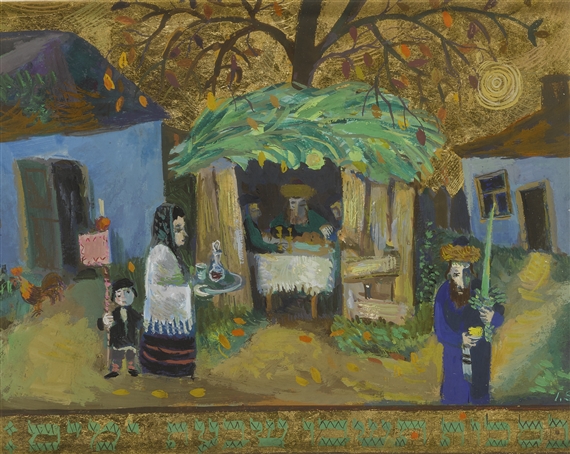Shiur Sukkah 45b (3)
BS”D
Sukkha 45b (3)
Kislev 13, 5783. December 6, 2022
1- We wrapped up last week’s discussion of the Chida by mentioning what Reb Mordechai Eliyahu related of the time the remains of the Chida arrived in Israel for reburial.
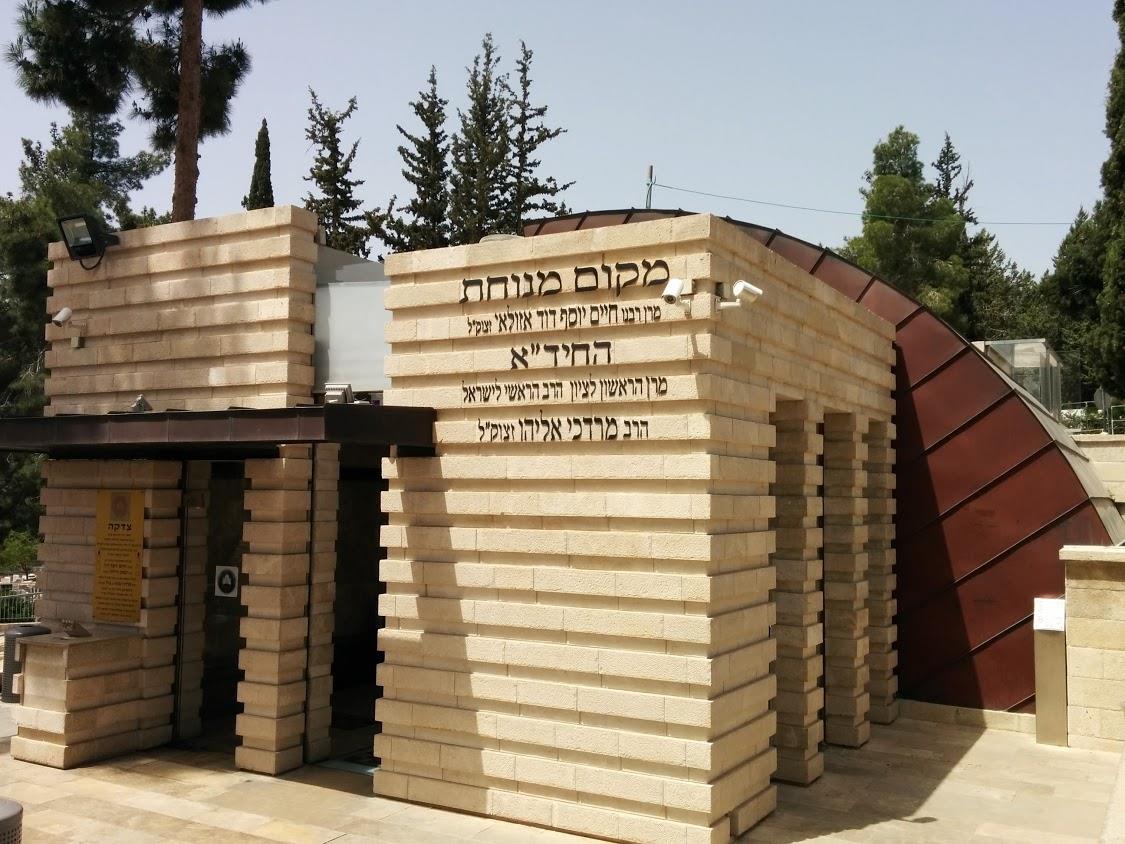
See last week’s link and also here.
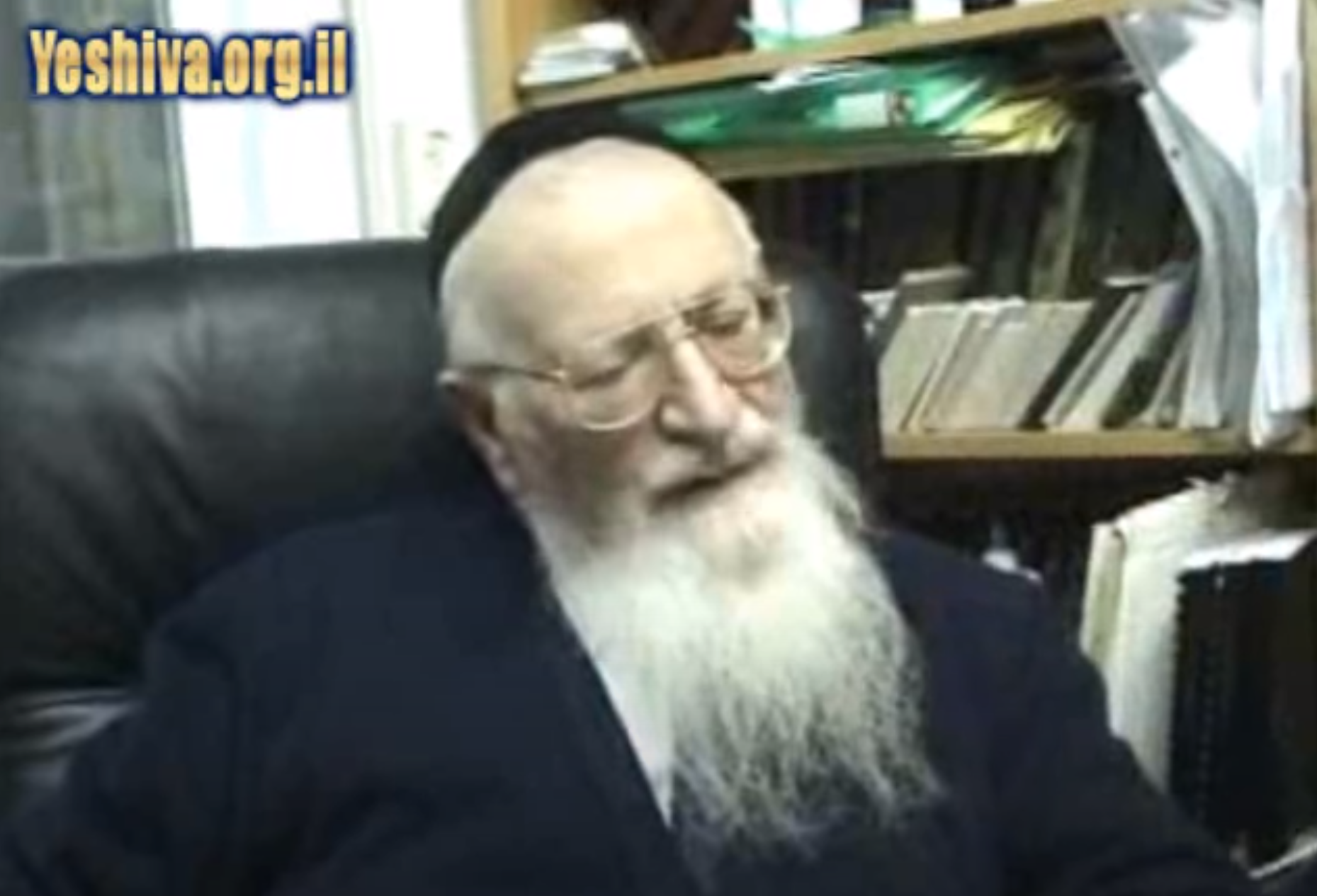
“The bones arrived in a box but all mixed up. I speak into the coffin and say Rabeinu Chida! And all the bones began to move and rearranged themselves into a full skeleton”.
2- Our Gemara: ‘The date tree has only one heart’.

What Bracha do you make on Hearts of palm?
The bracha is Ha’adama…
3- We began the Sugya of the ברכות on the
- Making of a Sukkah (ברכה or not)
- Sitting in a Suka (ברכה. Once or at every entry)
- Binding of the Lulav (ברכה or not)
- Bentching on the Lulav (1st day or all 7)
- Shehechiyonu on building the Sukkah (ברכה or not)
- Shehechiyonu on sitting in the Sukkah (Before לישב בסוכה or after)
- Shehechiyonu on the Lulav (Before or on Yom Tov)
- Shehechiyonu on the Yom Tov (If not made on day 1)

4 – Making of a Suka (ברכה or not)
In general: The basic opinions of the Bavli vs the Yerushalmi if a Brachah s made on the building of as Sukkah.
Bavli – No. Menachos 42b
ובישראל אין צריך
Yerushalmi – Yes. Brochos Chapter 9:3
הָעוֹשֶׂה סוּכָּה לְעַצְמוֹ. אוֹמֵר בָּרוּךְ אֲשֶׁר קִידְּשָׁנוּ בְמִצְוֹתָיו וְצִיוָּנוּ לַעֲשׂוֹת סוּכָּה
We discussed the rationale of the Yerushalmi as to why make a Brachah on an act that is only a הכשר מצוה.
Some suggest since it says ועשית חג הסוכות it means that the Posuk wants to give the building of the Sukkah the status of a Mitzvah.
We discussed that according to the Yerushalmi the writing of a מזוזה, for example, since it says וכתבתם is a Mitzvah that requires a Brachah as well.

Read part of the Rebbe’s footnote on this topic in לקו”ש יז, page 188 that even according to the בבלי it is a Mitzvah but one that does not require a ברכה.
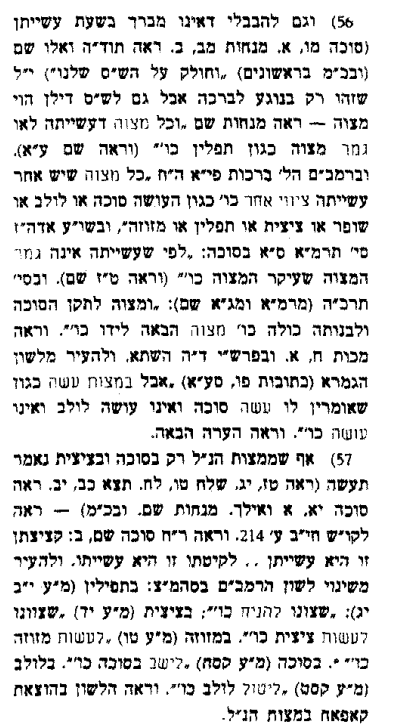
5 –Sitting in a Sukkah and Bentching on the Lulav
The opinion of Shmuel:
On the Sukkah we make the ברכה only once for the entire Yom Tov! But on the Lulav – every day. His explanation is
לוּלָב שִׁבְעָה, וְסוּכָּה יוֹם אֶחָד. מַאי טַעְמָא? לוּלָב דְּמַפְסְקִי לֵילוֹת מִיָּמִים, כׇּל יוֹמָא מִצְוָה בְּאַפֵּיהּ נַפְשֵׁיהּ הוּא. סוּכָּה דְּלָא מַפְסְקִי לֵילוֹת מִיָּמִים, כּוּלְּהוּ שִׁבְעָה כְּחַד יוֹמָא אֲרִיכָא דָּמוּ.
Since the obligation is to sit in the Sukkah literally non stop 24/7, it is one long Mitzvah! Thus one ברכה suffices for the full 7 days.
On the other hand Lulav, since there is no Mitzva at night, each day is a separate entity and requires a new ברכה.
6- We diverted to another Mitzvah that is constant – learning תורה.
Despite the obligation of וְהָגִיתָ בּוֹ יוֹמָם וָלַיְלָה we make a ברכה only once a day – in morning. Why don’t we make a ברכה every time we (stopped and) begin to learn? Why is the pausing not considered a הפסק?
בקיצור There are two approaches to this issue.
The approach of the Rosh:
We absolutely have to make a new ברכה everytime we begin to learn!
However, someone that is a learner – whose mind is always into learning (and that could be a businessman as well who is in a hurry to finish his work and return to his Gemore) is always connected to לימוד התורה. Even if this learner stops to learn for a few hours, it is never a true הפסק in his learning since the חיוב is constant and he is never מסיח דעת. Therefore, there is no need for him to say new ברכה. However, when he sleeps and cannot be learning, he must make a ברכה upon awakening. So every morning we say ברכת התורה.
A non- learner, must indeed make a new ברכה every time he pauses!!!
The approach of the אגור:
ברכת התורה is like all the other ברכות השחר that were established to be said only once, in the morning. So pausing and restarting to learn does not cause a need to say ברכת התורה again.
We follow the opinion of the אגור.
See also the Sicha on this. LS 14, 148 and on.
7- Sitting in a Sukkah and Bentching on the Lulav
One opinion of Reb Yochanon’s ruling. (and that is the Halacha we follow).
Both, Sukkah and Lulav require a ברכה every day.
8- We read the text of Tosfos, that despite the expression “Lulav and Sukkah on all 7 days”, there is a world of difference between them. Whereas with Lulav, the obligation is to shake it once a day only. So if someone decides to shake it again, after the morning מצוה, no ברכה is said.
Conversely, Sukkah, being that the obligation is a constant for the entire 7 days and nights, if one exists the Sukkah, a new ברכה must be made when re-entering.

9- Tosfos likens the constant obligation of Sukkah to תפילין that we are obligated to wear all times. Putting them on in the morning does not release us from performing the מצוה the entire day. We don’t do it because of גוף נקי.
[We wondered why we don’t put them on again for Minchah, which is shorter (for some…) than שחרית].
See באר היטב here. 37, 3 from the Rama miPanu that one should indeed put them on for Mincha.
In conclusion we mentioned that some disagree and say Tefillin is only a once a day obligation.
10- Spoke at length about the sad times in history of many communities that תפילין was very lax to the point that people just didn’t do it.

Some put on Tefillin only after ‘doing Teshuva’. Some only during עשרת ימי תשובה.
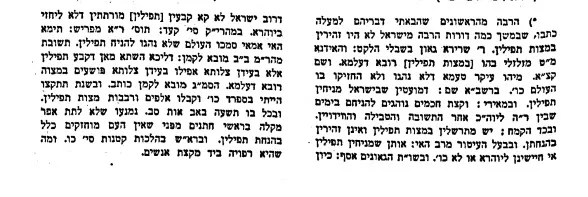
The Rebbe quoted the ספר מצוות גדול of an era where Tefillin was not popular and this great ראשון brought about a resurgence of מצוות Tefillin.
See this very interesting Sichah when the Rebbe announced the מבצע תפילין . As usual, critics tried to cool the enthusiasm and the Rebbe methodically responded to the criticism לקוטי שיחות ו, 271
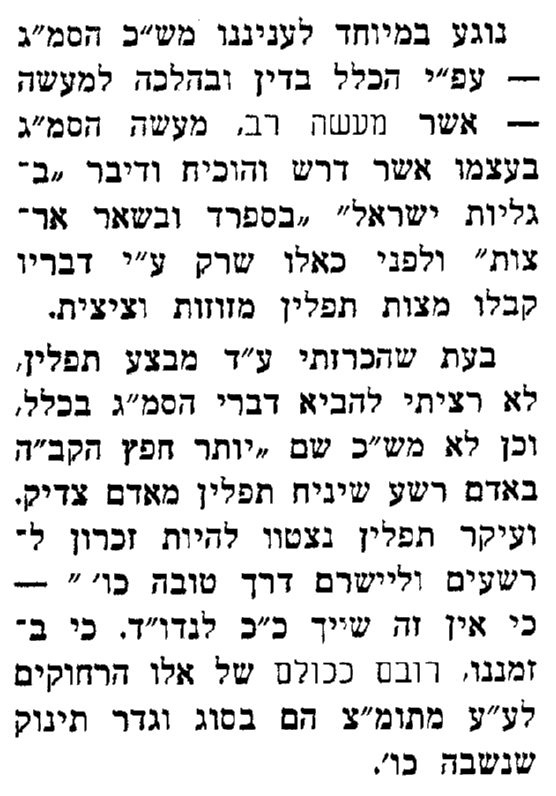
The סמ”ג encouraged thousands in Spain to put on Tefillin.
We mentioned אלישע בעל כנפים, who is mentioned in that סמ”ג, and in the article below.
ויהי אחר ארבע אלפים ותשע מאות ותשעים וחמש שנים לבריאות עולם היתה סיבה מן השמים להוכיח ובשנת תתקצ״ו הייתי בספרד להוכיחם ואמץ הקב״ה זרועותי בחלומות היהודים ובחלומות העכו״ם וחזיונו׳ הככבים ויט עלי חסדו ותרגז הארץ ותהי לחרדת אלהים ועשו תשובות גדולות וקבלו אלפים ורבבות מצות תפילין מזוזות וציצית וכן בשאר ארצות הייתי אחר כך ונתקבלו דברי בכל המקומות ובקשו ממני לכתוב פירוש המצות בקוצר והנני שואל עזר מאת אלקי גליות ישראל וחפצו בידי יצליח.


See here a well researched article citing all the history of this saga.
…מעניין לציין שמחברנו אינו מזכיר הברכה על הנחת תפילין׳…
משמע שאנשי מרסיי לא הניחו תפילין…
https://www.alysefer.com/tefilin/
11- We mentioned the Beis Yosef (EH end of 65) who quotes an old custom of placing ashes on the forehead of a חתן to commemorate the חורבן. ‘To place ashes in the place of Tefillin’.
However, he writes, this was abolished since not everyone puts on Tefillin!!
The זכר לחורבן was replaced by the breaking of a glass.

12- We concluded with the famous story of Elisha בעל כנפיים.
וְאַמַּאי קָרוּ לֵיהּ ״אֱלִישָׁע בַּעַל כְּנָפַיִם״? שֶׁפַּעַם אַחַת גָּזְרָה מַלְכוּת הָרְשָׁעָה גְּזֵרָה עַל יִשְׂרָאֵל שֶׁכׇּל הַמַּנִּיחַ תְּפִילִּין עַל רֹאשׁוֹ — יִקְּרוּ אֶת מוֹחוֹ, וְהָיָה אֱלִישָׁע מַנִּיחַ תְּפִילִּין וְיָצָא לַשּׁוּק, וְרָאָהוּ קַסְדּוֹר אֶחָד. רָץ מִלְּפָנָיו וְרָץ אַחֲרָיו. כֵּיוָן שֶׁהִגִּיעַ אֶצְלוֹ, נְטָלָן מֵרֹאשׁוֹ וַאֲחָזָן בְּיָדוֹ. אָמַר לוֹ: מַה בְּיָדְךָ? אָמַר לוֹ: כַּנְפֵי יוֹנָה. פָּשַׁט אֶת יָדוֹ וְנִמְצְאוּ בָּהּ כַּנְפֵי יוֹנָה. לְפִיכָךְ הָיוּ קוֹרְאִין אוֹתוֹ ״בַּעַל כְּנָפַיִם״.
The Gemara asks: And why did they call him Elisha, Man of Wings? Because on one occasion the wicked empire of Rome issued a decree against the Jewish people that, as punishment, they would pierce the brain of anyone who dons phylacteries on his head. Nevertheless, Elisha would don them and defiantly go out to the marketplace. One day, an official who was appointed to enforce the decree saw him. Elisha ran away from him, and the official ran after him. When the official reached him, Elisha removed the phylacteries from his head and held them in his hand. The officer asked him: What is in your hand? Elisha said to him: It is merely a dove’s wings. A miracle took place: He opened his hand, and, indeed, it was found to be a dove’s wings. Therefore, in commemoration of this miracle, they would call him Elisha, Man of Wings.

That story too is proof that Tefillin is not a one time מצווה.
The גמרא there has an interesting expression: Any Mitzvah that Jews had מסירת נפש to perform it, its observance continued thorough history. Such as מילה and עבודה זרה.
As opposed to תפילין that Jews did not have ,מסירת נפש It is only casually observed!
We mentioned Rabbi Lord Jonathan Sacks and his explanation as to why every Jew knows about Pesach and Yom Kippur but may not be aware of the other Yomim Tovim. His explanation is that as children, the above two were associated with work, sweat or being uncomfortable thus making a lasting impression on them.

https://www.greentec.co.il/uploads_thumbs/resized/large/products/2/871/main_image.webp?t=1660316214
